Retargeting and Remarketing: How to Recover Lost Sales in the Customer Journey
Did you know that nearly 97% of your website visitors leave without ever making a purchase? Imagine turning even a fraction of those missed opportunities into revenue—this is where retargeting and remarketing become your secret weapons. These strategies let you reconnect with potential customers along their buyer’s path, nudging them back to your site, recovering abandoned shopping carts, and maximizing your ROI. In this comprehensive guide, you’ll discover how to identify, reach, and convert those almost-customers into real, lasting sales. Ready to transform lost potential into measurable results? Let’s dive in!

Why Retargeting and Remarketing Are Essential for Your Marketing Campaigns
"97% of website visitors leave without purchasing anything on their first visit–retargeting and remarketing can help recover these lost opportunities."
Every modern marketing campaign faces the challenge of recapturing lost sales. With most online shoppers exploring multiple sites before making a purchase, it’s vital to implement retargeting and remarketing strategies that keep your brand top-of-mind throughout the customer journey . By leveraging both ad campaigns and personalized communication, you can transform lost interest into real revenue. These methods are not just add-ons—they’re essential gears in the machine that drives successful marketing campaigns today.
Companies that use remarketing and retargeting see increased site revisits and higher conversion rates, outpacing traditional campaigns. Whether you’re using Google ads , social media platforms , or targeted email campaigns, these approaches enable you to nurture a potential customer back to becoming a buyer. Featuring a strategic blend of display ads , personalized emails, and dynamic creative, you ensure your brand stands out during the decisive moments in a prospect’s shopping journey.
Understanding Retargeting and Remarketing in the Customer Journey
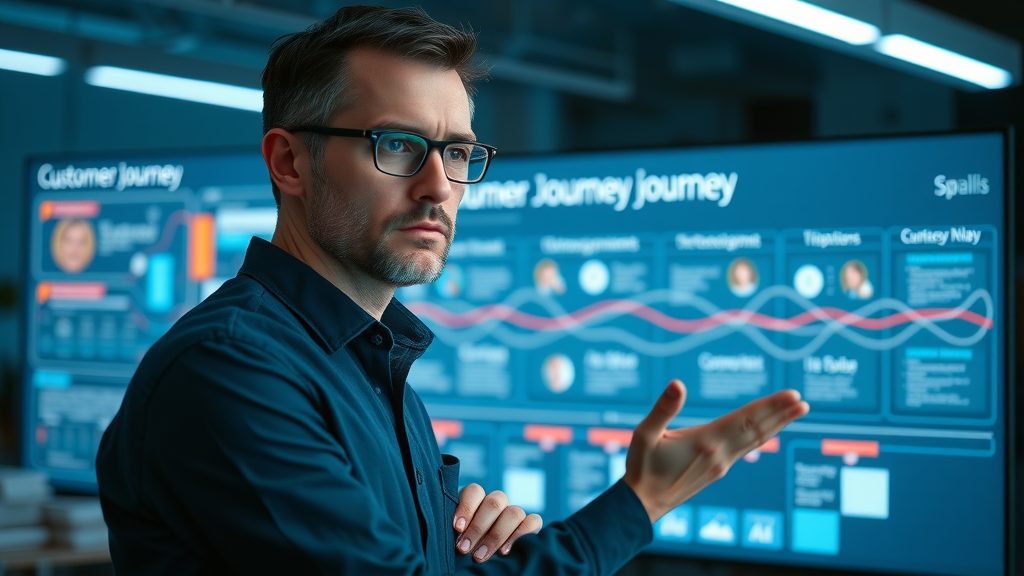
The customer journey is rarely a straight line. Buyers discover your brand, browse products, and sometimes leave—often with items lingering in their shopping cart . Retargeting allows you to serve display ads to those visitors as they navigate other sites, gently reminding them of what they left behind. Remarketing , on the other hand, nurtures your relationship with those who have shared their email list info, reaching out via tailored emails and special offers to entice action.
Understanding where your potential customers drop off is crucial in setting up effective ad campaigns . The best strategies use both retargeting and remarketing along key customer journey touchpoints—showing dynamic product ads to visitors who browsed specific pages, and deploying personalized emails for those who started but didn’t complete a purchase. By aligning your messaging with each stage of discovery and decision-making, you can reliably increase your conversion rate .
The Power of Remarketing and Retargeting to Reconnect with Potential Customers
Imagine a potential customer who visits your website and demonstrates interest but leaves without buying. With a robust retargeting campaign , your brand appears in their social media feeds, banners, or through Google ads , gently nudging them back at opportune moments. These repeated, relevant touchpoints can make the difference between a missed sale and a loyal customer.
Remarketing campaigns boost engagement by sending targeted emails to users on your email list , with reminders, exclusive offers, or content tailored to their browsing history. Cross-channel retargeting ensures you maintain seamless brand consistency, maximizing the likelihood that potential customers return and complete their journey. Incorporating both strategies means your marketing campaign works relentlessly across platforms, multiplying each visitor’s potential value.
What You'll Gain by Mastering Retargeting and Remarketing
- Learn differences between retargeting and remarketing
- Discover effective strategies using top marketing tools
- Unlock how Google Ads and social media amplify success
- Understand how to recapture sales from the abandoned shopping cart
- Explore real-world examples and actionable tips
Retargeting and Remarketing: Definitions, How They Work, and Impact on Potential Customers
Defining Retargeting and Remarketing for Your Marketing Campaign
| Aspect | Retargeting | Remarketing |
|---|---|---|
| Channel | Display ads, social media, Google ad campaigns | Mostly email marketing |
| Tactic | Targeting users by cookies or pixel-based tracking | Re-engagement via collected email list |
| Typical Goal | Bring cold leads back to your site | Convert leads using existing relationship |
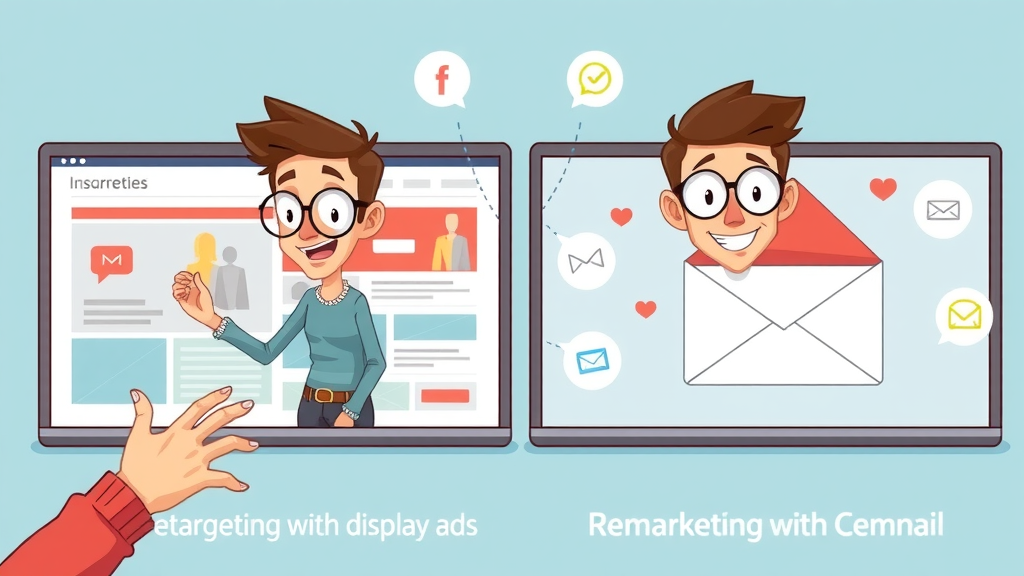
Retargeting uses display ads and social media to reach users who have visited your site but haven’t converted. By leveraging Google ad pixels or cookie-based tracking, you can follow these visitors around the web and keep your brand front and center. Remarketing , meanwhile, re-engages users in your email list who have already established a relationship—these are individuals who might have subscribed to a newsletter, abandoned a cart, or made a past purchase.
Both retargeting campaigns and remarketing campaigns aim to bridge the gap between initial interest and a final sale, but they use different channels and tactics to do so. While retargeting extends your reach across the open web and media platforms , remarketing leverages the power of direct, personalized email outreach to foster trust and recover otherwise lost conversions.
Key Differences: Retargeting vs. Remarketing
- Retargeting uses ad campaigns across platforms ( Google ads , social media )
- Remarketing relies on direct email campaigns to your email list
- Both aim to recover abandoned shopping cart users and convert potential customers
Identifying when to use each strategy—and how to blend them—means understanding their core capabilities. Retargeting is best for brand exposure and reminding potential customers who have shown interest but haven’t yet shared their contact information. Remarketing is ideal for nurturing leads you’ve already captured; it’s the follow-up that turns browsers into buyers by fostering a sense of personalized engagement. Together, they help you address every segment of your target audience for stronger marketing campaign performance.
Combining these two approaches gives your business multi-channel coverage. This means whether a visitor leaves right after browsing or almost completes a purchase, your marketing tools ensure they don’t forget you—and you maximize the chance of drawing them back to your site.
Building Successful Retargeting and Remarketing Campaigns in the Customer Journey
Understanding Your Target Audience in Retargeting Campaigns
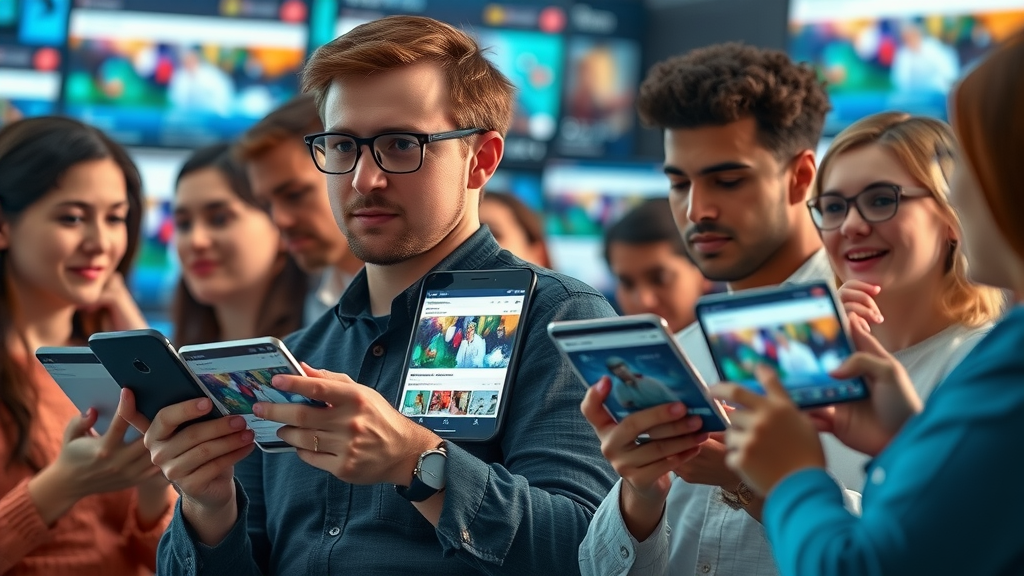
The heart of every successful retargeting campaign is a deep knowledge of your target audience . Different segments of your website visitors behave in unique ways: one user might spend time comparing your product features, while another may abandon their shopping cart at checkout. Identifying these segments enables you to serve highly relevant display ads that match each user’s intent and behavior.
Develop detailed audience personas that include demographics, browsing habits, purchase history, and engagement channels. Use analytics from marketing tools like Google Ads and social media dashboards to continuously refine these profiles. When you match the right message to the right audience at the right time, your ad campaigns generate better click-through rates, more qualified leads, and ultimately, higher conversion rates .
Creating a Remarketing Campaign with Email Marketing
While retargeting shines at reaching unknown visitors, remarketing campaigns with email marketing are unbeatable for nurturing leads you’ve already captured. Automated email marketing sequences—like abandoned cart reminders, re-engagement workflows, and special offers—enable you to bring potential customers back into the purchasing funnel. These emails can feature dynamic product images, personalized messages, and clear calls-to-action.
Integrating your email list with your other marketing tools ensures that every interaction is tracked and optimized for performance. Segmenting your list by customer stage or product interest allows you to customize your messaging, sending the right offer at the right moment for maximum impact.
"Retargeting and remarketing campaigns see click-through rates 10x higher than regular ad campaigns." - Marketing Insights Report
Segmenting Potential Customers for Better Ad Campaign Performance
Segmentation—grouping potential customers by behavior or profile—multiplies the effectiveness of both retargeting and remarketing campaigns . You might segment by users who viewed specific products, added to cart but didn’t finish checkout, visited your site multiple times, or signed up for your newsletter. Each group receives customized messages for their decision stage, delivering relevance that cuts through digital noise.
Use your marketing tools to set up automated rules for these segments. For example, first-time visitors see reminder display ads , while those who’ve abandoned a shopping cart get a discount email. Keeping your creative and offers tightly aligned with segment intent raises engagement and conversion rates across all ad campaigns .
Choosing the Right Marketing Tools: Google Ads, Social Media, and More

The success of your retargeting and remarketing hinges on choosing the right marketing tools . Google Ads , for instance, enables you to build custom audiences and target visitors as they move across millions of sites. Social media giants like Facebook and Instagram let you create lookalike audiences and dynamic product ads that appear in users’ feeds based on their browsing history. Email marketing platforms, meanwhile, automate personalized follow-ups to boost abandoned cart recovery and nurture campaigns.
Ad management dashboards and analytics tools are vital to track every touchpoint. These platforms make it easy to test (and iterate) creative assets, adjust audience segments, and optimize your retargeting campaign or remarketing campaign in real time. By integrating everything— Google Ads , social media , and email—you ensure seamless coverage and better results throughout the customer journey .
Why Google Ads Is a Powerful Tool for Retargeting and Remarketing
Google Ads is among the most flexible and powerful marketing tools for retargeting and remarketing . Whether you want to re-engage potential customers with display ads on the web or via YouTube, Google’s immense reach and granular targeting options make it easy to present your message to the right audience at the right time. Advanced features like custom intent audiences, conversion tracking, and dynamic creative ensure you’re always optimizing for ROI.
By connecting your email list and website analytics to Google Ads, you can combine behavioral, demographic, and contextual data. This holistic approach enables you to orchestrate ad campaigns that align with each phase of the marketing campaign funnel, making your spend more efficient and your results more predictable.
Leveraging Social Media Platforms to Re-engage Potential Customers
Social media platforms are a goldmine for retargeting—and not just for B2C brands. Platforms such as Facebook, Instagram, and LinkedIn offer advanced targeting and creative options: carousel ads, video retargeting, and dynamic product suggestions. These ads blend seamlessly into the content feeds of your potential customers , driving both engagement and conversions in a familiar setting.
Social platforms also enable the creation of lookalike audiences —people similar to your existing customer base —expanding your reach beyond your current email list or site traffic. You can fine-tune your ad campaigns with split testing, segmentation options, and detailed analytics, making social media an indispensable channel for any modern marketing strategy .
Comparing Top Marketing Tools for Retargeting and Remarketing Campaigns
| Tool | Best For | Unique Features |
|---|---|---|
| Google Ads | Website visitors, display retargeting | Custom audiences, cross-device reach |
| Facebook Ads | Social engagement, broad reach | Lookalike audiences, dynamic product ads |
| Mailchimp | Email remarketing | Automated cart recovery, segmentation |
The choice of marketing tools should reflect your goals and target audience. If dynamic ad creative and broad reach are your focus, Google Ads and Facebook Ads are excellent. If you’re intent on leveraging your email list for personalized outreach and automation, platforms like Mailchimp offer unmatched flexibility. Combining these solutions into a unified marketing campaign yields maximum awareness, engagement, and conversions.
Retargeting and Remarketing Strategies for Cart Abandonment Recovery
Best Practices for Engaging Shoppers Who Abandon the Shopping Cart

Abandoned shopping carts are an inevitable hurdle in ecommerce. Fortunately, retargeting and remarketing excel at re-engaging these almost-customers to recover lost sales. Timing is everything: act quickly with a remarketing campaign via email or retargeting campaign via ads to remind shoppers of forgotten products and incentivize their return.
Utilize dynamic display ads that showcase the very items left behind, offering urgency or additional value (like a limited-time discount) to encourage completion of the transaction. Alongside, personalized email reminders—sometimes paired with free shipping or bonus incentives—can nudge hesitant buyers back to their carts, boosting your overall conversion rate .
Retargeting Campaigns That Reclaim Lost Sales
Successful retargeting campaigns for cart abandonment use a mix of frequency and specificity. The first touch may simply remind the shopper of what remains in their cart. Follow-up ads (across Google Ads or social media ) can highlight customer reviews, create urgency, or include special deals. Sequencing the messaging and monitoring which variant works best is crucial for maximizing returns.
Advanced marketing tools let you control how often users see your messages and offer real-time performance analytics. By testing different creatives and messages within your ad campaigns , you can find the sweetest spot between helpful reminders and annoyance—ultimately raising the chance that a potential customer completes their purchase.
Personalizing Remarketing Campaigns to Address Customer Needs
- Use dynamic display ads highlighting abandoned products
- Send personalized email marketing reminders
- Offer time-limited discounts or incentives
Personalization is key to remarkable remarketing campaigns . Use customer data—preferred products, browsing history, or cart contents—to craft compelling emails and display ads . When a shopper feels understood and receives a timely, relevant message, they are much more likely to return and buy.
Automated marketing tools can segment your email list and audience pools for laser-focused outreach. Even a simple name mention or tailored discount can make a big difference, retaining your brand’s position top-of-mind during the critical decision-making stages of the customer journey .
Maximizing ROI: Measuring the Success of Your Retargeting and Remarketing

To optimize your marketing efforts and increase profitability, it’s essential to measure the right performance indicators. The most successful retargeting and remarketing campaigns don’t just bring back visitors—they convert them into buyers, upsell additional products, and foster loyalty. Key metrics like conversion rate , click-through rate (CTR), and return on ad spend (ROAS) reveal which tactics are working.
Use your marketing tool dashboards to compare performance across channels ( Google Ads , social media , or email marketing ). Pay special attention to assisted conversions—sales where retargeting or remarketing was the crucial nudge. Continually refine your audience, creative, and offers based on live data to maximize every marketing dollar.
Key Metrics for Assessing Marketing Campaign Results
Effective measurement focuses on actionable KPIs for ongoing improvements:
- Conversion Rate: The percentage of visitors who take a desired action after clicking your ad or opening your email.
- Click-Through Rate (CTR): Indicates the appeal of your message and creative.
- Return on Ad Spend (ROAS): How much revenue you earn for each dollar spent on your campaigns.
- Cart Recovery Rate: Percentage of abandoned carts that are successfully converted via retargeting or remarketing.
- Email Open and Click Rates: For remarketing campaigns, these gauge subject line and content effectiveness.
Tracking these figures helps you spot trends, diagnose weak spots, and double down on what works in your marketing campaign .
Tracking Google Ads and Social Media Retargeting Performance
Both Google Ads and social media provide granular reporting tools. Track not just impressions and clicks but also user behavior post-click: Are they spending more time onsite? Making a purchase? Advanced attribution tools can tell you which touchpoints move potential customers closer to conversion, letting you allocate budget more effectively and scale winning tactics.
Frequent reporting and intelligent segmentation are your allies—set goals, compare performance between audience segments, and let data-driven insights fuel your next ad campaign .
Email List Growth and Remarketing Campaign Conversions
The power of remarketing is amplified with a large, engaged email list . Monitor your list growth rate and track how segmented email campaigns drive site visits, abandoned cart recoveries, and purchases. Use advanced tools like A/B subject line testing and automation workflows to refine your sequences for maximum engagement and sales.
By capturing more emails—via pop-ups, checkout prompts, or content offers—you fuel ongoing remarketing campaigns that deliver sustainable results well beyond the first sale. This ongoing nurture builds trust, brand affinity, and higher customer lifetime value.
Integrating Retargeting and Remarketing in the Full Customer Journey
Mapping Remarketing and Retargeting Across Marketing Campaigns
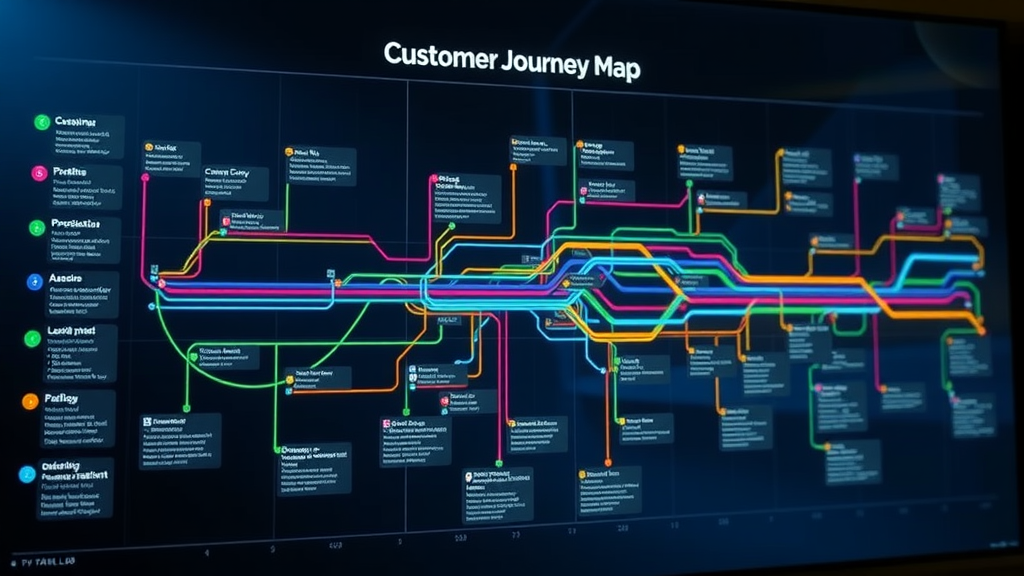
To maximize impact, integrate retargeting and remarketing throughout your full customer journey . Start by mapping all touchpoints where a potential customer interacts with your brand—ad clicks, website visits, product page views, email opens, and more. At each stage, tailor your ad campaigns and messaging to anticipate their needs and remove friction.
This omnichannel approach ensures that your message reaches prospects on their preferred platform at exactly the right moment. Use sequencing techniques to follow up site visits with a social ad, then an abandoned cart email, creating a persistent, high-value presence that increases conversions.
Orchestrating Omnichannel Experiences for Potential Customers
Modern buyers expect seamless transitions across platforms and devices. An effective marketing campaign blends display ads , personalized emails, social media engagement, and even SMS notifications for a holistic experience. The more consistent and timely your communication, the more likely potential customers are to convert.
"A customer’s journey is rarely linear. Remarketing and retargeting allow you to appear at critical decision-making moments, boosting your conversion rates."
Coordinating your marketing efforts with unified branding, creative, and offers lets you create a memorable digital presence. By leveraging all available marketing tools , you enhance recall, improve engagement, and ultimately drive more sales at every decision point.
Advanced Tactics: Using Email Lists, Lookalike Audiences, and Sequenced Messaging
Grow Your Email List for Powerful Remarketing and Retargeting
No remarketing strategy outperforms campaigns fueled by a strong email list . Capture emails using incentives such as exclusive discounts, content upgrades, or early access offers. Remember, even a modest increase in subscribers significantly widens your reach—meaning every remarketing campaign packs a bigger punch.
Regularly clean and segment your list, encouraging subscribers to express their preferences. Automated sign-up forms, checkout opt-ins, and retargeted pop-ups across your site keep the top of your funnel continuously refreshed for ongoing campaign success.
Create Sequenced Ad Campaigns to Guide Potential Customers

Sequenced messaging guides potential customers from awareness to purchase with a series of relevant, timely ad campaigns . Start with a broad reminder—such as a retargeted display ad—then deepen the engagement through personalized email and social messages. Each step delivers information or offers tailored to where the user left off, steadily removing obstacles to conversion.
Marketing tools like Google Ads and advanced email platforms let you automate these sequences. Analyze performance after each step and tweak creative or timing to maximize progression through your customer journey .
Utilize Lookalike and Similar Audiences Across Multiple Marketing Tools
You can dramatically boost new customer acquisition by targeting lookalike audiences —users who share characteristics with your best existing customers . Both Google Ads and social media platforms support this powerful tactic, using data from your email list or CRM to find new, highly relevant prospects.
These advanced audience features let you scale your retargeting and remarketing programs, expanding reach while maintaining creative and message relevance. This is one of the most effective ways to grow your market presence and outpace competitors in digital acquisition.
Watch: The Customer Journey Through Retargeting and Remarketing Tactics
For a visual walk-through on how retargeting and remarketing support the customer journey , watch educational videos that outline real-life scenarios, successful ad placements, and automated email marketing techniques. These resources show step-by-step how brands recover lost sales and create lasting customer relationships using modern marketing tools .
Use this knowledge to inform your next campaign—from planning to execution—and see how omnichannel touchpoints make all the difference.
Case Studies: Real-World Marketing Campaigns That Used Retargeting and Remarketing
Case 1: Recovering Sales from Shopping Cart Abandonment
Brand A implemented a retargeting campaign using dynamic display ads and personalized emails to remind shoppers of their abandoned carts. They offered a time-limited discount for returning customers, resulting in a staggering 30% recovery rate of lost sales.
Case 2: Using Google Ads to Reconnect with Potential Customers
Brand B built a two-step marketing campaign leveraging Google Ads display retargeting and social media lookalike audiences. Shoppers who didn’t convert during their first visit received targeted banner ads, doubling the brand’s conversion rate on the second website visit.
Case 3: Email Remarketing Drives Repeat Visits
Brand C grew its email list by 40% in three months through on-site captures and checkout prompts. Using segmented remarketing campaigns , they increased email open rates and recovered hundreds of abandoned baskets, driving multiple repeat purchases from existing subscribers.
- Brand A: 30% recovery rate with cart retargeting campaigns
- Brand B: Doubled conversion from first to second visit using social media remarketing
- Brand C: Increased email list size by 40% with personalized remarketing emails
Expert Quotes on Retargeting and Remarketing Success
"Retargeting and remarketing are not just marketing tools—they’re essential for maximizing your campaign ROI." - Digital Marketing Director
People Also Ask About Retargeting and Remarketing
What is an example of retargeting?
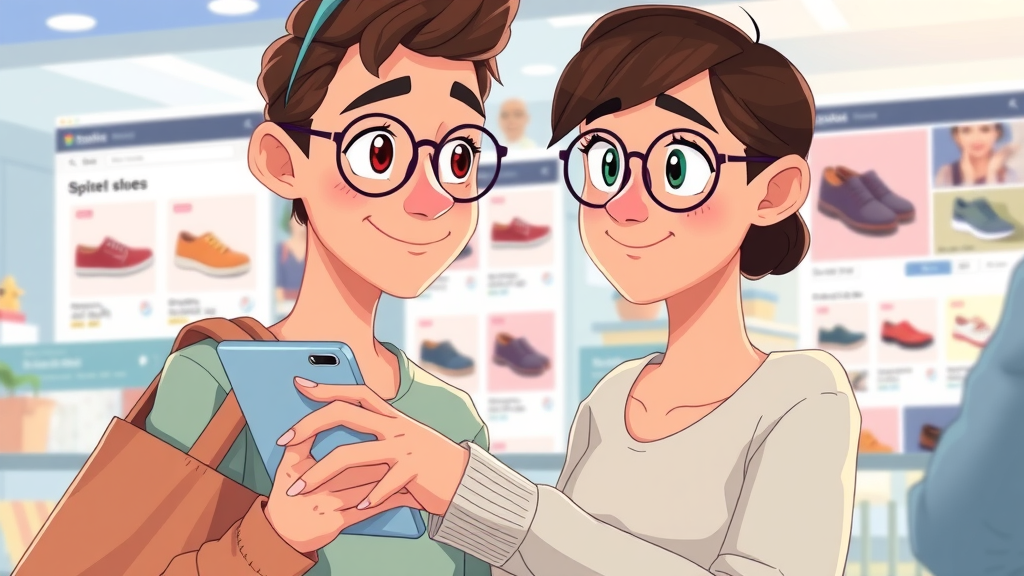
An example of retargeting is when a user leaves an online store without buying, and later sees a display ad for that product on a social media feed or news website. This targeted ad, delivered via a Google ad or similar platform, nudges the potential customer to return and complete their purchase. Retargeting ensures your brand stays top-of-mind during their next decision-making moments.
What is the difference between retargeting and retention?
The main difference is that retargeting focuses on recapturing leads or visitors who left your site without converting, while retention centers on keeping existing customers happy and engaged after a sale. Retargeting reaches new or cold prospects through ads, while retention involves marketing strategies like loyalty programs, satisfaction surveys, or exclusive offers for repeat buyers.
What is the meaning of retargeting?
Retargeting is a digital marketing practice that shows targeted ads to website visitors who didn’t convert the first time. By tracking user behaviors with cookies or pixels, businesses deliver relevant display ads or social media campaigns to encourage return visits and completed purchases. Its main goal is to recover lost potential and boost overall conversion rates .
What is the difference between remarketing and Demarketing?
While remarketing focuses on reconnecting with past website visitors or email subscribers to encourage transactions, Demarketing tries to discourage demand for a product, often to avoid over-consumption or protect brand reputation. Remarketing drives sales and engagement, while Demarketing reduces demand for strategic or ethical reasons.
Frequently Asked Questions About Retargeting and Remarketing
- Is retargeting and remarketing expensive? Not necessarily—costs vary based on industry and competition, but most platforms allow for precise budget control and reveal strong ROI when campaigns are properly optimized.
- How do I integrate retargeting with my email marketing campaigns? Use your email list to trigger personalized email sequences after key actions (such as cart abandonment), and sync email data with platforms like Google Ads for even more customized audiences.
- Can small businesses benefit from retargeting and remarketing? Absolutely. Even modest campaigns can quickly multiply a small business’s conversions by turning interested visitors into paying customers through timely, relevant follow-ups.
- What makes a retargeting campaign successful? Success hinges on knowing your target audience , offering personalized creative, timing your messages well, and continually analyzing results to refine your ad campaign strategy.
Boost Retargeting and Remarketing Results with These Actionable Tips
- Define precise audience segments for each campaign
- Use dynamic ads that update based on browsing behavior
- Time your messages and ads for maximum relevance
- Test and iterate on creative, offers, and call-to-action

Take Your Retargeting and Remarketing to the Next Level
Unlock greater revenue and drive customer loyalty—start building or refining your retargeting and remarketing strategy today. Let's have a chat, call 904-385-5213
To deepen your understanding of retargeting and remarketing strategies, consider exploring the following resources:
- “Retargeting vs. Remarketing: Which One Should You Choose?” ( hightouch.com )
This article provides a clear comparison between retargeting and remarketing, helping you determine which strategy aligns best with your marketing goals.
- “Retargeting vs. Remarketing: What Is the Difference?” ( adroll.com )
This resource delves into the nuances between retargeting and remarketing, offering insights into how each can be effectively utilized in your marketing campaigns.
If you’re serious about enhancing your marketing efforts, these resources will provide valuable insights into effectively implementing retargeting and remarketing strategies.
 Add Row
Add Row  Add
Add 



Write A Comment